Subtotal
$0
U.S. Shipping
FREE
Saved for Later
Shopping Cart
Subtotal
$0
U.S. Shipping
FREE
Saved for Later
The life of Jacob Abraham Camille Pissarro stands out amongst Impressionists, his hardships a reflection of the tumultuous world he lived in. Born on the island of St. Thomas in 1830, Pissarro grew up alongside tropical rainforests and nesting sea turtles, the kind of landscape that one would imagine births a great artist. His time amidst the otherworldly beauty of St. Thomas was not without difficulty. Due to his parent’s unorthodox marriage, Pissarro spent his early years in exile of the island’s Jewish community, instead attending a segregated primary school. Here, Pissarro learned to read and write alongside the first generation of free Black children born on St. Thomas in almost 150 years. Later in life, Pissarro would stand out amongst European painters for his inclusion of people of color in his painted subjects.
Moving to France from 1842 to 1846 to study at the Savary Academy, Pissarro would return to St. Thomas in his late adolescence, bringing with him a deep interest in the French Masters and a passion for capturing the gaiety of life. In the Caribbean, he focused his paintings on the daily lives of St. Thomas’ Black population, demonstrating the dignity the young artist saw in communities often left invisible to the art world. It’s theorized that Pissarro met the British painter James Gay Sawkins during his return to the island, as both painters depicted the people of St. Thomas through a similar lens of the beauty in daily life.
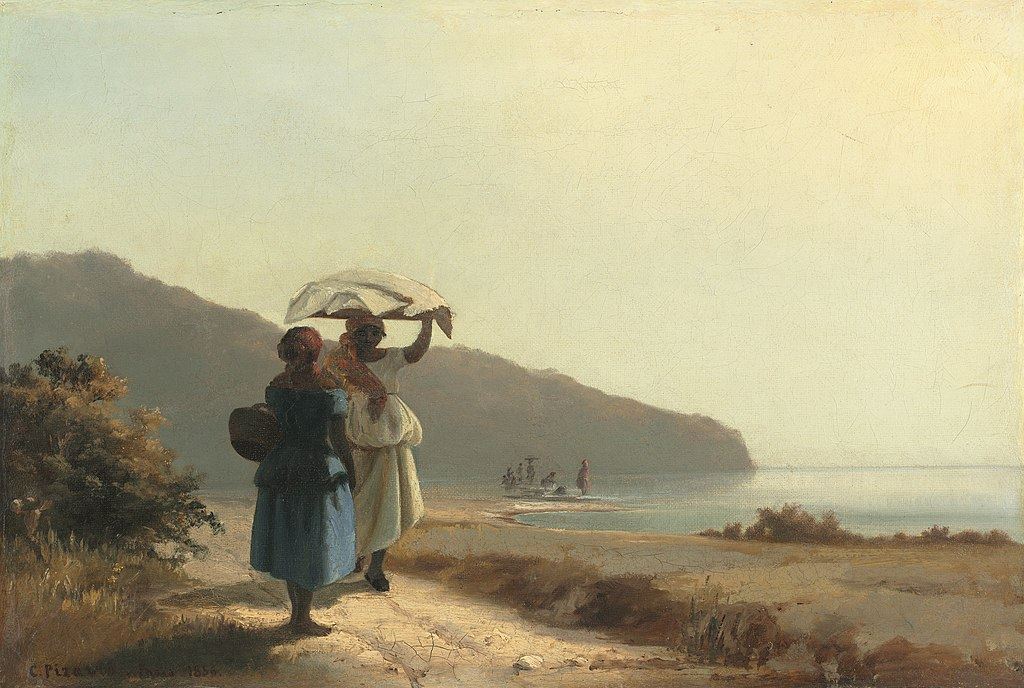
Two Women Chatting by the Sea by Camille Pissarro, 1856
In 1851, Pissarro left his family clerk’s office and traveled to Venezuela, where he painted full-time with his close friend and fellow painter, Fritz Melbye. It was through Pissarro’s friendship with Melbye that he would later find work in Paris and move back to France in 1855. Upon his return, Pissarro studied at the Academie Suisse and Ecole des Beaux-Arts. However, the traditional styles taught at these institutions began to feel restraining to Pissarro, and he sought mentorship from individual artists whose styles refreshed him. Impressed by the sentimental tones of Jean Francois-Millet, Courbet, and Corot, Pissarro found a personal tutor in the latter. Corot introduced Pissarro to open-air painting, and during this time of growth, Pissarro focused on scenes of nature in the French countryside. Gradually, Pissarro’s ambitions strayed beyond the instructions of Corot, and the young artist experimented with painting scenes all in one sitting, without revision- an attempt to capture the “first impression” of a landscape.
In 1859, Pissarro achieved his first display at the Paris Salon, the main marketplace for young artists at the time. In order to do this, Pissarro had to subscribe to traditional painting methods, which frustrated him and other students whom he’d befriended at the Academie Suisse. Claude Monet, Paul Cezanne, and Armand Guillaumin all found camaraderie in their exploratory painting styles and encouraged one another to defy standards and paint people in natural settings. By 1863, the group’s paintings were being routinely rejected from the Salon, and in rare moments when a piece was displayed, public hostility often ensued. No stranger to exile, Pissarro ignored critics and continued to use bright palettes amidst his cheerful depictions of life, producing paintings regardless of commissions.
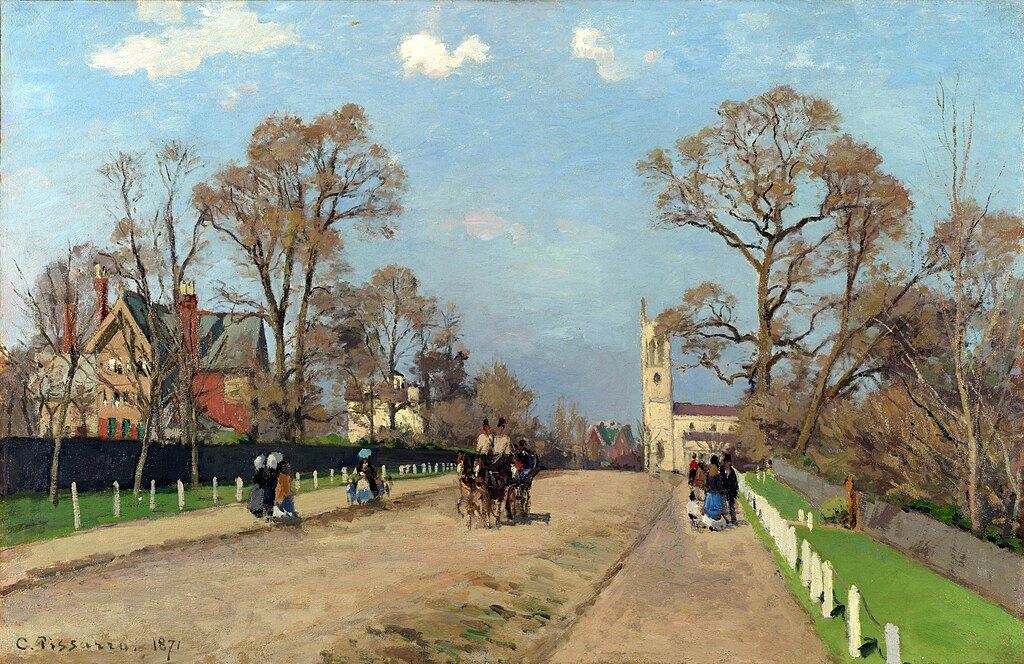
The Avenue, Sydenham by Camille Pissarro, 1871
The Franco-Prussian War of 1870 forced Pissarro into London, where his paintings were met with the same controversial reception as in Paris. His time in London was not fruitless, though, as Pissarro began experimenting with loosely blended brush strokes, a style that would later evolve into Pointillism. Upon returning to Paris in 1872, Pissarro found that over a thousand of his early paintings had been destroyed in the war, leaving a mere forty behind. In the face of this upset, Pissarro’s unrelenting will found strength to continue. He gathered with fellow painters Monet, Renoir, and Degas to express a need for a new family of painters. In 1873, Pissarro helped to establish a collective of fifteen artists who called themselves “Société Anonyme des Artistes.” Pissarro not only acted as the group’s first charter but was also pivotal in organizing the collective’s debut show in 1874, the first “Impressionist” art exhibit in history.
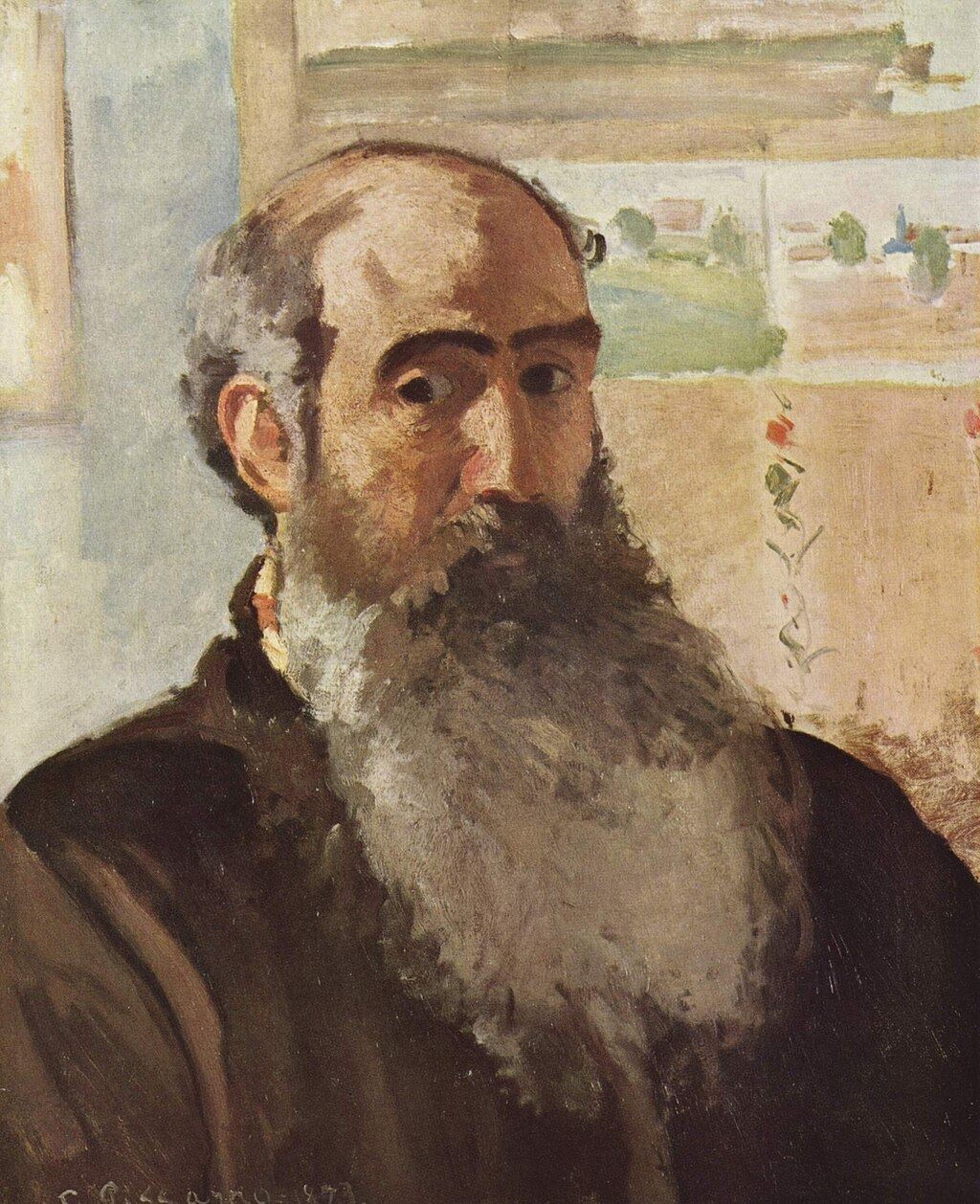
Self-Portrait by Camille Pissarro, 1873
By 1880, Pissarro refocused his work on peasant life, depicting the working class in their common jobs, an act Renoir would later describe as “revolutionary.” Continuing his ever-adapting painting style, Pissarro began employing small brushstrokes of pure color with a refusal to blend the strokes, marking one of the earliest uses of pure Pointillism. Pissarro’s disregard for traditional standards gave the artist an eye ahead of his time. Upon seeing Vincent Van Gogh’s work in 1884, Pissarro would join the small handful of individuals who actually praised Van Gogh in the artist’s lifetime, a beautiful complement from one controversial painter to another.
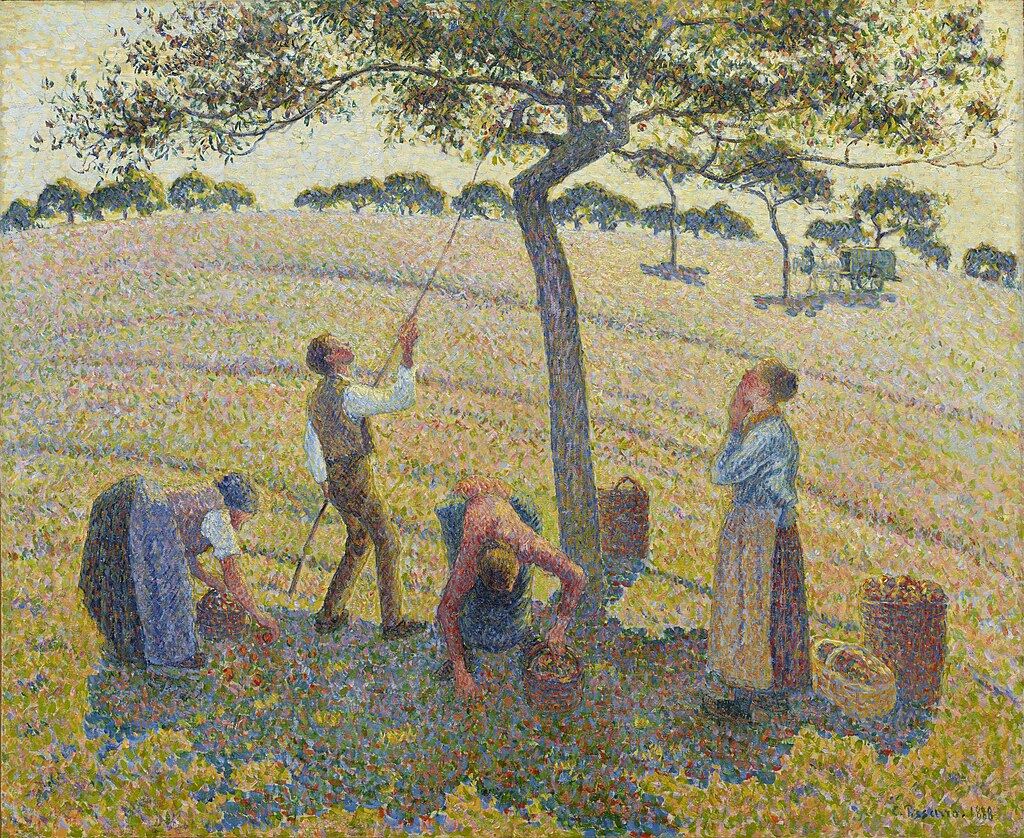
Apple Harvest by Camille Pissarro, 1888
From the 1890s until his passing in 1903, Pissarro painted with an exciting combination of Impressionistic and neo-Impressionistic styles, portraying street life with a slight flair of Pointillism that is not unlike the method utilized by Van Gogh in his famous self-portraits of 1887. During these years, Pissarro developed an eye condition that kept him from painting outdoors, so the artist began renting hotel rooms and setting up an easel near the window. For this reason, his later works are often from the bird’s eye view of a second or third-story room.
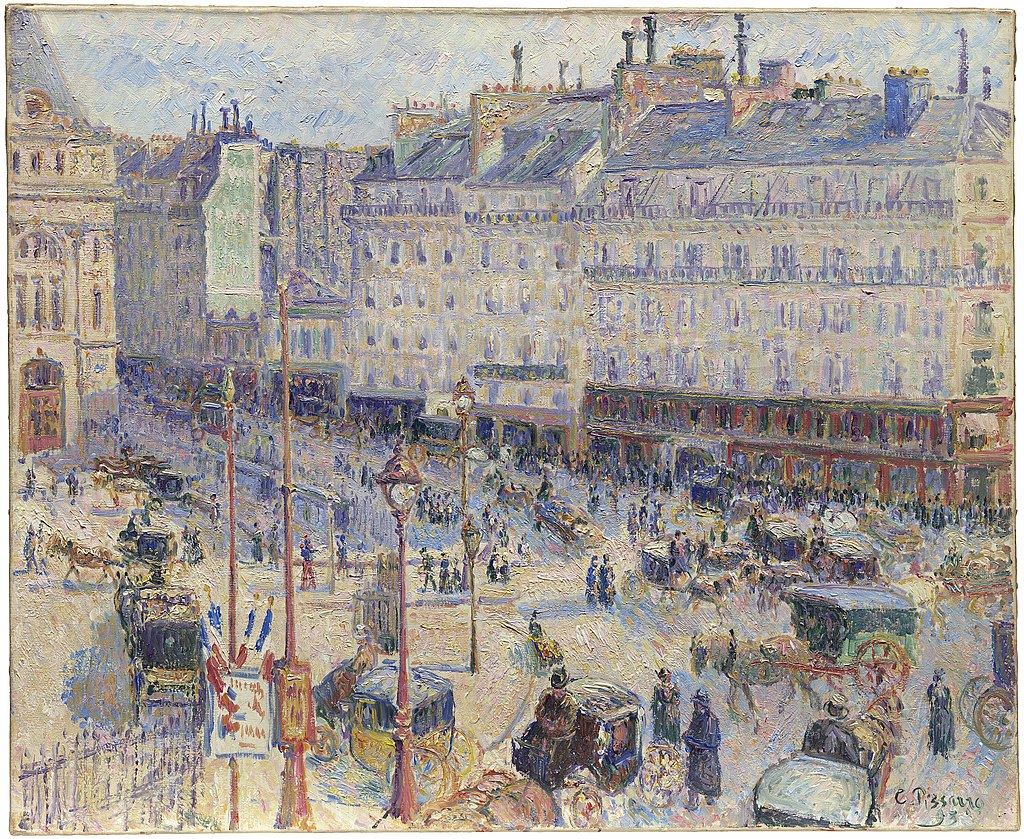
La Place du Havre et la rue d’Amsterdam, Matin, Soleil by Camille Pissarro, 1893
Pissarro was the most notable Jewish Impressionist painter, and as tensions of anti-Semitism stirred throughout Europe, many of Pissarro’s lifelong peers succumbed to bigotry. In the last decade of his life, old friends and Impressionist legends such as Degas and Renoir refused to even greet the painter on the street. After not attending his funeral in 1903, Degas wrote, “so he has died, the poor old wandering Jew.” Claude Monet, in a reflection of his empathetic character, remained a close friend to Pissarro through these times. In letters between the two, Pissarro expressed upsetting encounters with anti-Semitism in his daily life and in reviews of his artwork, though he never let such sentiments discourage him from painting.
As the Nazi movement tore through Europe in the ’30s and ’40s, countless artworks by Pissarro, who had been a favorite amongst Jewish collectors, were stolen by the Reich. Lengthy legal battles ensued, and the rightful possession of many Pissarro paintings has been hotly contested well into the 21st century. A recent instance was Leonie Meyer, who fought against the Fred Jones Jr Museum over the piece “Shepherdess Bringing Home the Sheep” (1886). In 2020, after Meyer’s legal endeavor was met with a heavy financial countersuit, the eighty-year-old holocaust survivor stated, “I have no other choice,” in giving up the painting.
Pissarro’s most impressive auction price came in 2014, when his piece “Le Boulevard Montmartre, Matinee De Printemps” (1897), painted from a vantage point in the Grand Hotel de Russie, was sold at Sotheby’s London for £19,682,500. Before its record sale at Sotheby’s, the painting was stolen from victims of the Auschwitz concentration camp, Max and Johanna Silberberg.
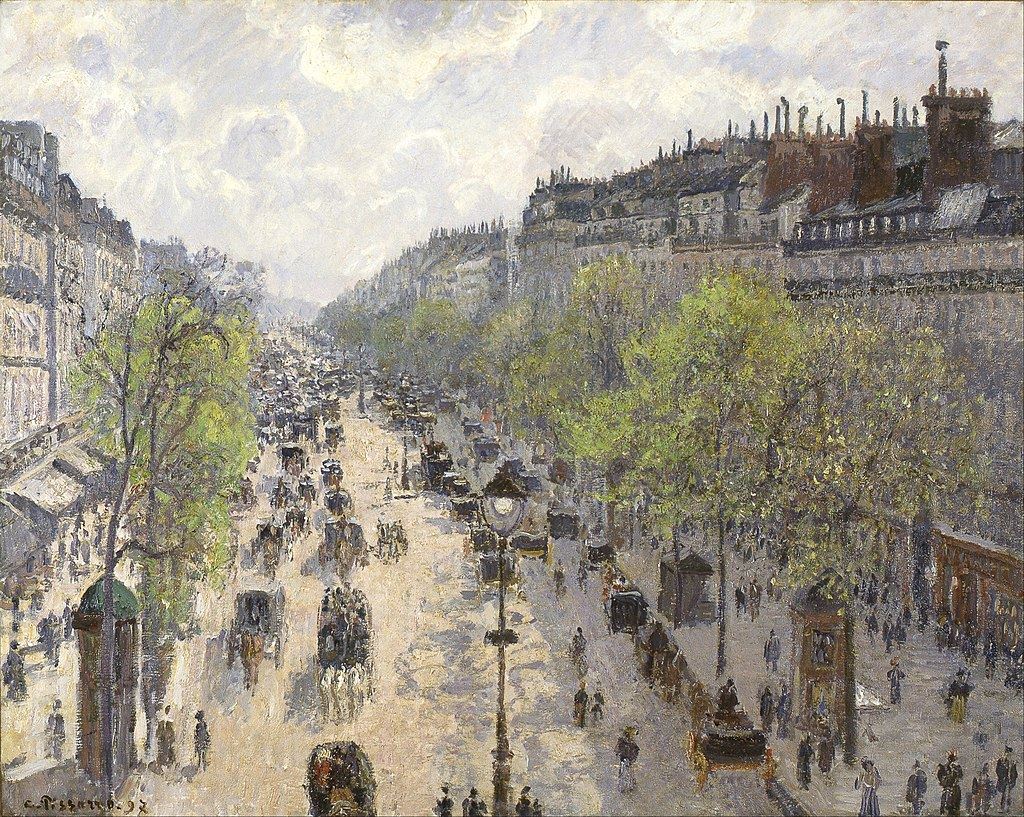
Le Boulevard de Montmartre, Matinée de Printemps by Camille Pissarro, 1897
Pissarro’s artworks, recognized as some of the earliest Impressionist paintings in existence, have passed down through history with no greater ease than the painter himself. Pissarro stood against bigotry with the same quiet dignity that he had learned in his childhood on St. Thomas. Here was a man who did not let the world break his spirit. From birth to death, Pissarro was a bold testament against the status quo of the art world- through a relentless drive for authenticity and experimentation, he trudged bravely through a world of critics. He was, in many ways, a heart for the Impressionist movement, giving others inspiration and companionship while defying the norms. His strength of character never sharpened his gentle spirit, and Pissarro remained a thoughtful companion and teacher over his lifetime, with painter Mary Cassette stating he “could have taught the stones to draw.”
The memory of Pissarro is not only marked by the will of all Impressionist painters, but by Pissarro’s particular endurance through hardship. From a childhood in exile and decades in rejection to abandonment and physical ailment at the peak of his career, Pissarro refused to be hardened by circumstance. In his gentle manner and ambitious earnestness, it is impossible to say just how far Pissarro’s influence has reached. His outlook on life is best described through his own affirmation, “Blessed are they who see beautiful things in humble places where other people see nothing.”
About the author: Mary C. Kennelly is a Gen Z writer in Brooklyn, New York. She writes short fiction and essays which aim to capture the complexities of the human experience. With a background in Environmental Science, her work is heavily influenced by themes of resilience and community.
Citations:
Adler, K. (2005, March 10). Camille Pissarro. Encyclopædia Britannica.
Alberge, D. (2013, December 22). Retired cook traced £10m artwork snatched by Nazis. The Times.
Berson, R. (1996). The New Painting: Impressionism 1874-1886: Documentation. Fine Arts Museums of San Francisco. ISBN 0-295-96704-8. (https://archive.org/details/ newpaintingimpre0000unse/page/n315/mode/2up)
Camille Pissarro. (n.d.). Camille Pissarro. Artnet.com. (https://www.artnet.com/artists/ camille-pissarro/biography)
Shapell. (2020, January 21). Camille Pissarro and the Dreyfus Affair. Shapell Manuscript Foundation.
Dunlop, I. (1972). The Shock of the New: Seven Historic Exhibitions of Modern Art. New York: American Heritage Press.
Gordon, S. (2014, January 14). Sotheby’s to auction restituted Pissarro’s “Boulevard Montmartre.” Center for Art Law.
Hamilton, G. (1976). Pissarro, Camille. Collier's Encyclopedia. Halsey, William D. (ed.). Vol. 19. p. 83.
Murphy, J. (2015, September 14). The Marriage of Opposites: Who Was Rachel Pissarro. Internet Archive.
Parsons, M. (2014, January 18). Art looted by Nazis continues to surface at auction. The Irish Times.
U.S. Department of the Interior. (2022, August 24). African diaspora. National Parks Service.
Discover the artist at the forefront of modern impressionism.
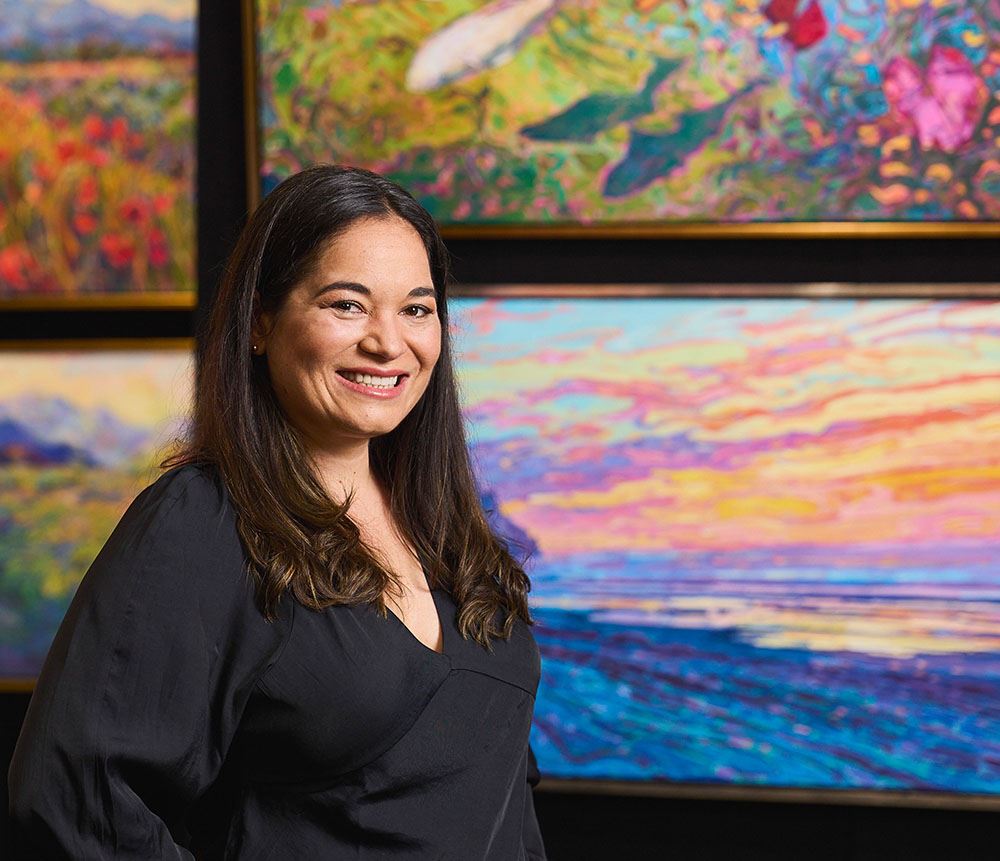
About Erin
ERIN HANSON has been painting in oils since she was 8 years old. As a teenager, she apprenticed at a mural studio where she worked on 40-foot-long paintings while selling art commissions on the side. After being told it was too hard to make a living as an artist, she got her degree in Bioengineering from UC Berkeley. Afterward, Erin became a rock climber at Red Rock Canyon, Nevada. Inspired by the colorful scenery she was climbing, she decided to return to her love of painting and create one new painting every week.
She has stuck to that decision, becoming one of the most prolific artists in history, with over 3,000 oil paintings sold to eager collectors. Erin Hanson’s style is known as "Open Impressionism" and is taught in art schools worldwide. With millions of followers, Hanson has become an iconic, driving force in the rebirth of impressionism, inspiring thousands of other artists to pick up the brush.
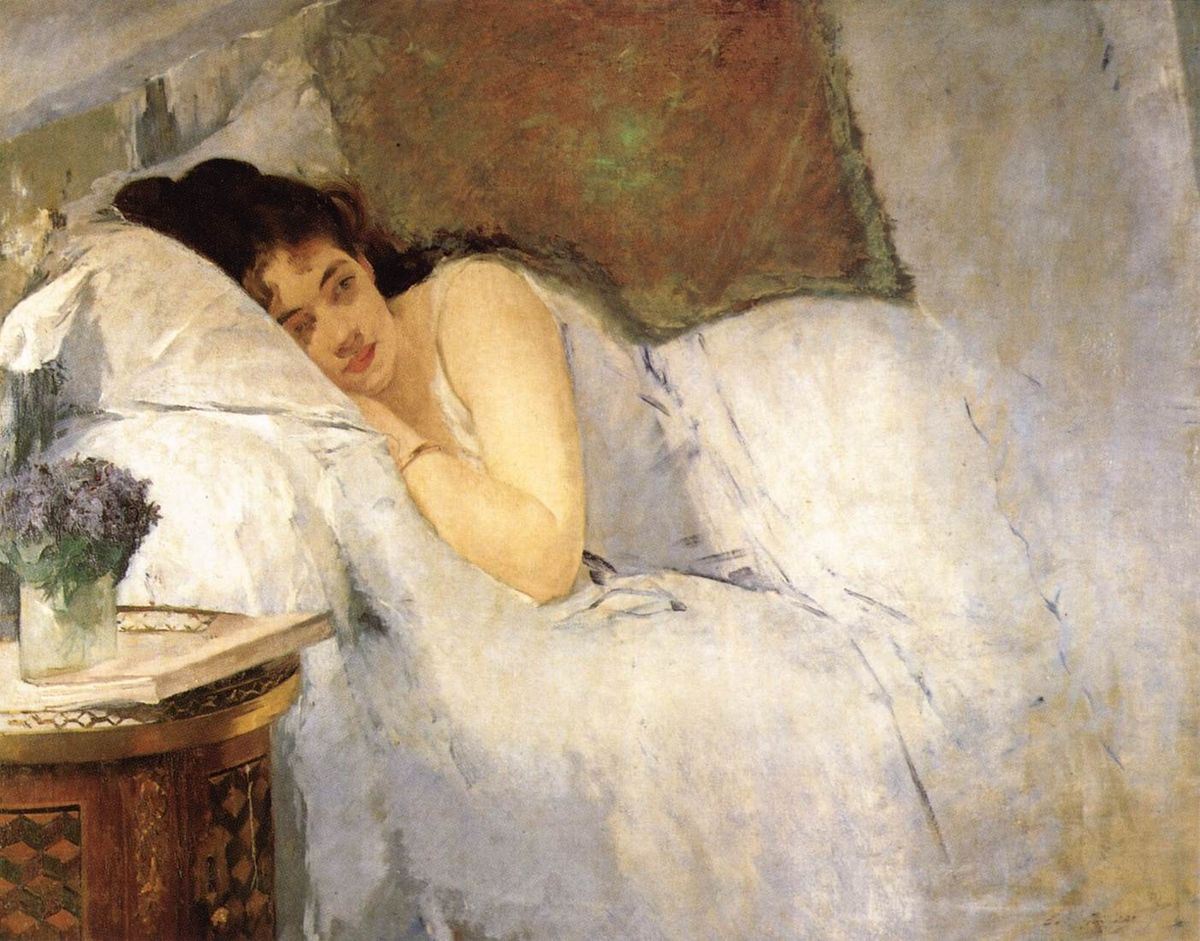
|
Shining a Light on Women in the ArtsThursday, March 14, 2024Women have created art all around the world for centuries. This article shines a light on female artists from G.H. Roethe to Berthe Morisot to Helena of Egypt. Read on to find your next favorite female artist. Read More → |

|
|
Shining a Light on Women in the Arts Thursday, March 14, 2024 Women have created art all around the world for centuries. This article shines a light on female artists from G.H. Roethe to Berthe Morisot to Helena of Egypt. Read on to find your next favorite female artist. Read More → |
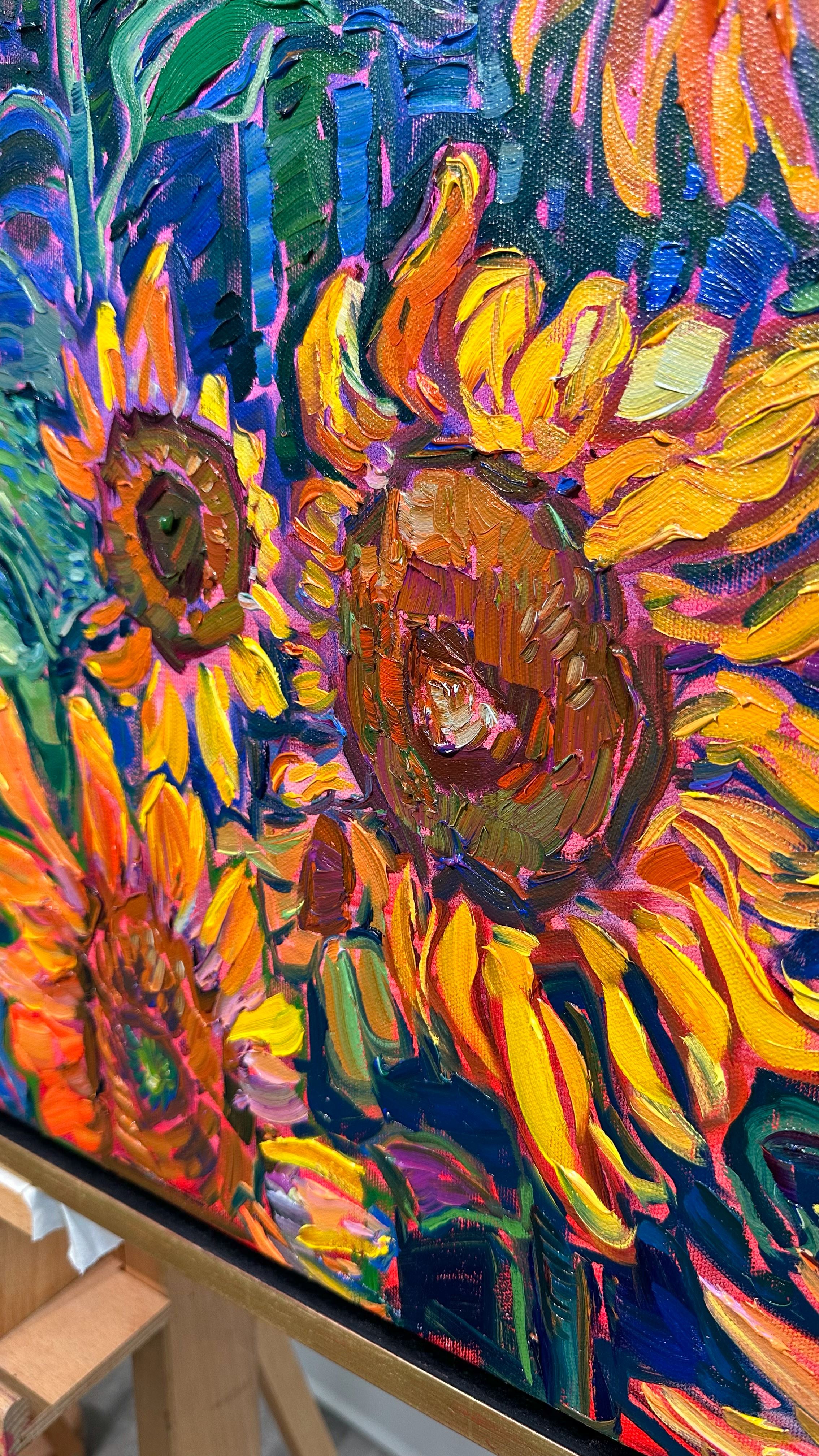
|
How Has Impasto Painting Been Used Throughout History?Examine the history of impasto art with The Erin Hanson GalleryWednesday, June 28, 2023Erin Hanson and many other contemporary painters use impasto painting techniques in their art. This article shares where the impasto technique comes from and how it rose to prominence in the past centuries. Read More → |

|
|
How Has Impasto Painting Been Used Throughout History? Examine the history of impasto art with The Erin Hanson Gallery Wednesday, June 28, 2023 Erin Hanson and many other contemporary painters use impasto painting techniques in their art. This article shares where the impasto technique comes from and how it rose to prominence in the past centuries. Read More → |
|
|
A Profile of Prolific Artists Throughout History - Part OneArtists Who Created One Thousand or More PiecesThursday, September 29, 2022When we consider artists who produced many works, we often look at artists found through more modern history. Monet, for example, produced thousands of pieces in his lifetime. Picasso is the most prolific artist in history, having created over fifty thousand works. Erin Hanson has completed well over two thousand paintings, and she’s still painting and creating to this day. We cannot know which artists were prolific back in the time of the Pharaohs or even early cave dwellers. But we can seek out immensely productive artists throughout history and share their beautiful works as we consider how this collection of beauty has affected our everyday lives. That is what this series of articles attempts to do. Read More → |
|
|
|
A Profile of Prolific Artists Throughout History - Part One Artists Who Created One Thousand or More Pieces Thursday, September 29, 2022 When we consider artists who produced many works, we often look at artists found through more modern history. Monet, for example, produced thousands of pieces in his lifetime. Picasso is the most prolific artist in history, having created over fifty thousand works. Erin Hanson has completed well over two thousand paintings, and she’s still painting and creating to this day. We cannot know which artists were prolific back in the time of the Pharaohs or even early cave dwellers. But we can seek out immensely productive artists throughout history and share their beautiful works as we consider how this collection of beauty has affected our everyday lives. That is what this series of articles attempts to do. Read More → |
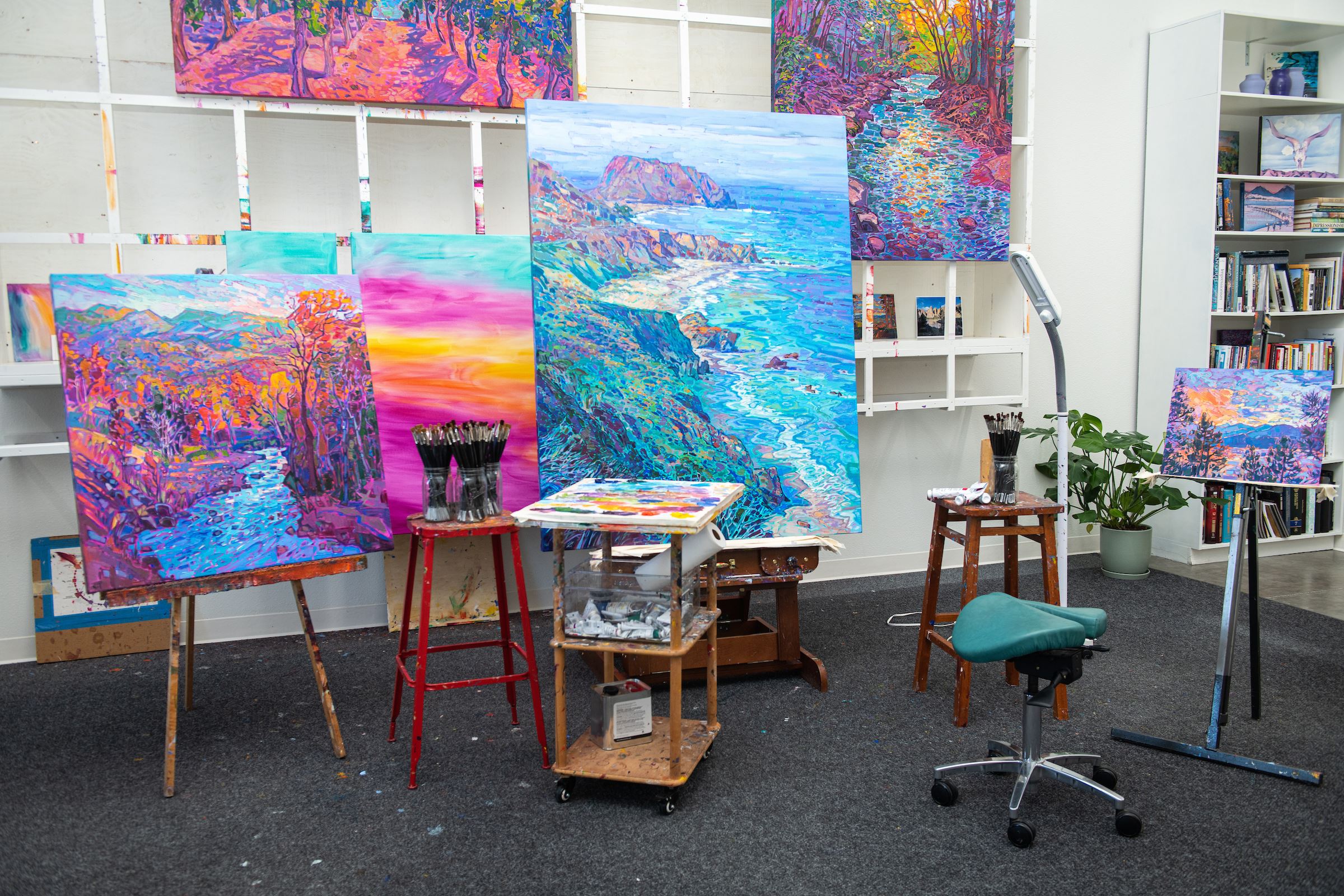
|
A Profile of Prolific Artists Throughout History - Part TwoArtists Who Created One Hundred or More PiecesThursday, September 29, 2022As we consider the works of renaissance painters, baroque sculptors, post-impressionists, and modern artists, we think about what is most important in each artist’s work. What are they trying to share with the world by creating powerful art? Are they hoping to move the viewer to tears? Do they wish the viewer to connect with a piece of history on a visceral level? Each of these intensely talented and hard-working artists was hoping to move you in some way. We hope this list helps you connect with an artist you may not have heard of or moves you in some way to connect more deeply with an artist you love. Read More → |

|
|
A Profile of Prolific Artists Throughout History - Part Two Artists Who Created One Hundred or More Pieces Thursday, September 29, 2022 As we consider the works of renaissance painters, baroque sculptors, post-impressionists, and modern artists, we think about what is most important in each artist’s work. What are they trying to share with the world by creating powerful art? Are they hoping to move the viewer to tears? Do they wish the viewer to connect with a piece of history on a visceral level? Each of these intensely talented and hard-working artists was hoping to move you in some way. We hope this list helps you connect with an artist you may not have heard of or moves you in some way to connect more deeply with an artist you love. Read More → |
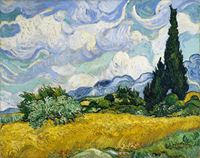
|
Van Gogh: Beyond ImpressionismCredit: Article reproduced with permission from theartstory.orgFriday, July 15, 2022Vincent Van Gogh was born the second of six children into a religious Dutch Reformed Church family in the south of the Netherlands. His father, Theodorus Van Gogh, was a clergyman and his mother, Anna Cornelia Carbentus, was the daughter of a bookseller. Van Gogh exhibited unstable moods during his childhood, and showed no early inclination toward art-making, though he excelled at languages while attending two boarding schools. In 1868, he abandoned his studies and never successfully returned to formal schooling. Read More → |

|
|
Van Gogh: Beyond Impressionism Credit: Article reproduced with permission from theartstory.org Friday, July 15, 2022 Vincent Van Gogh was born the second of six children into a religious Dutch Reformed Church family in the south of the Netherlands. His father, Theodorus Van Gogh, was a clergyman and his mother, Anna Cornelia Carbentus, was the daughter of a bookseller. Van Gogh exhibited unstable moods during his childhood, and showed no early inclination toward art-making, though he excelled at languages while attending two boarding schools. In 1868, he abandoned his studies and never successfully returned to formal schooling. Read More → |
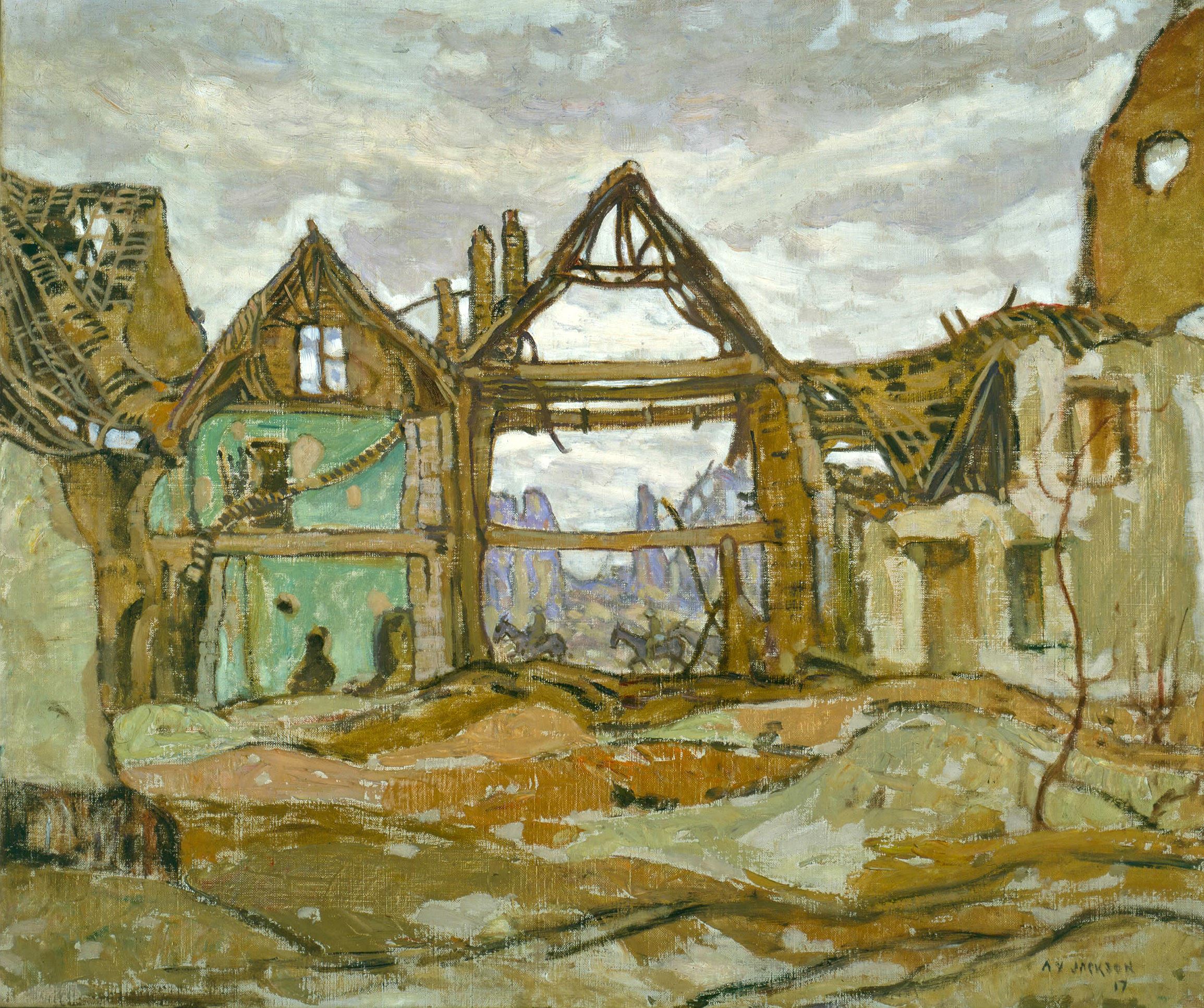
|
The Group of Seven, Canada’s Impressionist MovementHow Impressionism helped a New Country Find its VoiceFriday, August 27, 2021The Group of Seven gained inspiration from classic impressionism, the Canadian landscape, and their own views on modern art. While most of the painters in The Group chose landscapes and pastoral subjects for their later works, they did not all begin painting in nature. Many of the painters chose to depict local slums, harbors, soldiers, the Great War, and the industrialization of their city. Read More → |

|
|
The Group of Seven, Canada’s Impressionist Movement How Impressionism helped a New Country Find its Voice Friday, August 27, 2021 The Group of Seven gained inspiration from classic impressionism, the Canadian landscape, and their own views on modern art. While most of the painters in The Group chose landscapes and pastoral subjects for their later works, they did not all begin painting in nature. Many of the painters chose to depict local slums, harbors, soldiers, the Great War, and the industrialization of their city. Read More → |
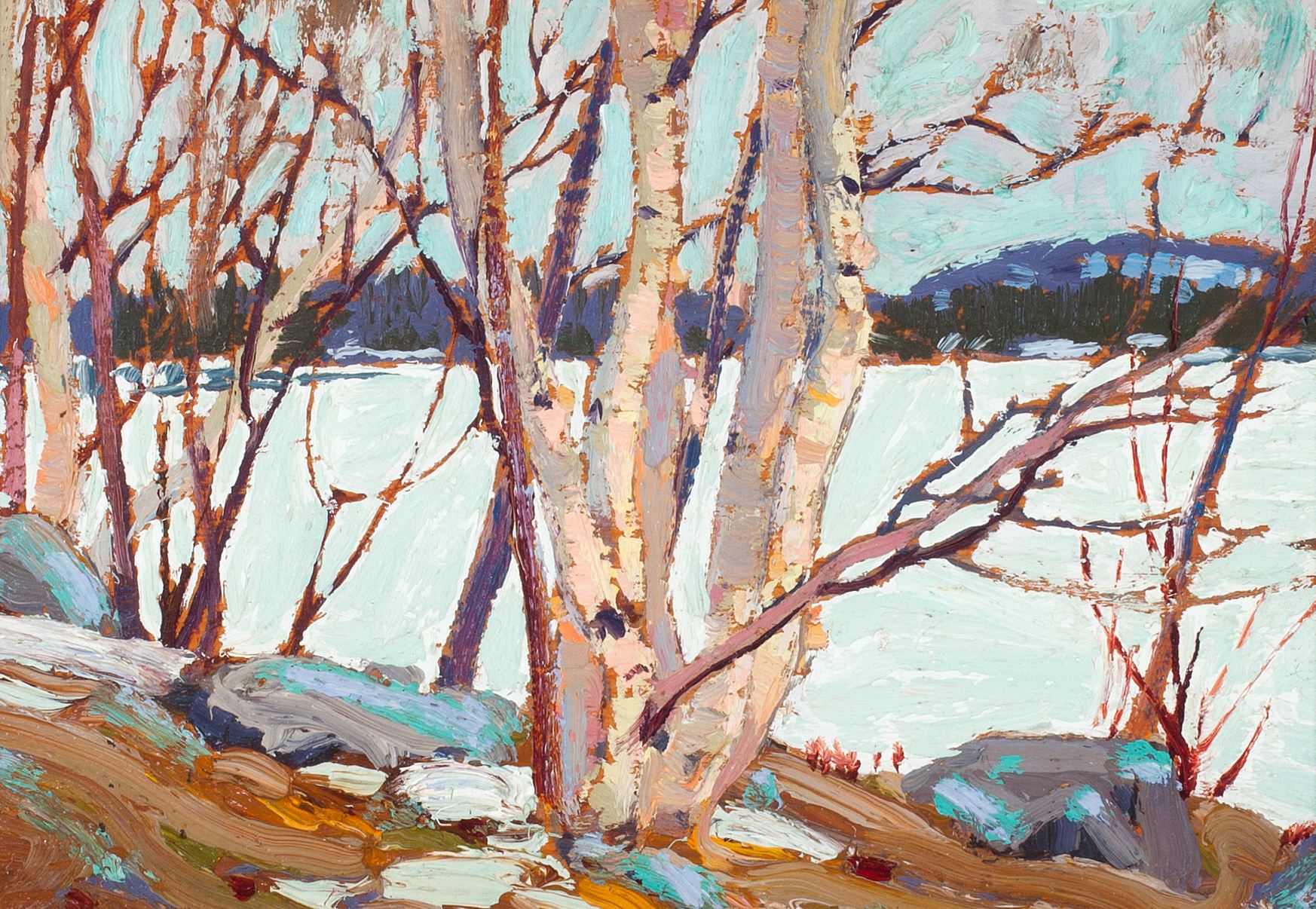
|
The Group of Seven, Canada’s Impressionist MovementHow Impressionism helped a New Country Find its VoiceThursday, July 15, 2021Back in the early 1900s, the Canadian landscape was called “unpaintable” by skeptics. A lot was going on in Canada at the time; the Industrial Revolution was in full swing, non-native settlers were forging an incredibly wild and inhospitable countryside, and World War I was brewing. Perhaps, with so many settlers struggling to carve out lives in such uncertain terrain, the natural lands of Canada were considered too hostile for anyone to depict it with beauty. The rugged land was one to be tamed, not celebrated. Fortunately, a group of Canadian artists did not see it that way. Read More → |

|
|
The Group of Seven, Canada’s Impressionist Movement How Impressionism helped a New Country Find its Voice Thursday, July 15, 2021 Back in the early 1900s, the Canadian landscape was called “unpaintable” by skeptics. A lot was going on in Canada at the time; the Industrial Revolution was in full swing, non-native settlers were forging an incredibly wild and inhospitable countryside, and World War I was brewing. Perhaps, with so many settlers struggling to carve out lives in such uncertain terrain, the natural lands of Canada were considered too hostile for anyone to depict it with beauty. The rugged land was one to be tamed, not celebrated. Fortunately, a group of Canadian artists did not see it that way. Read More → |
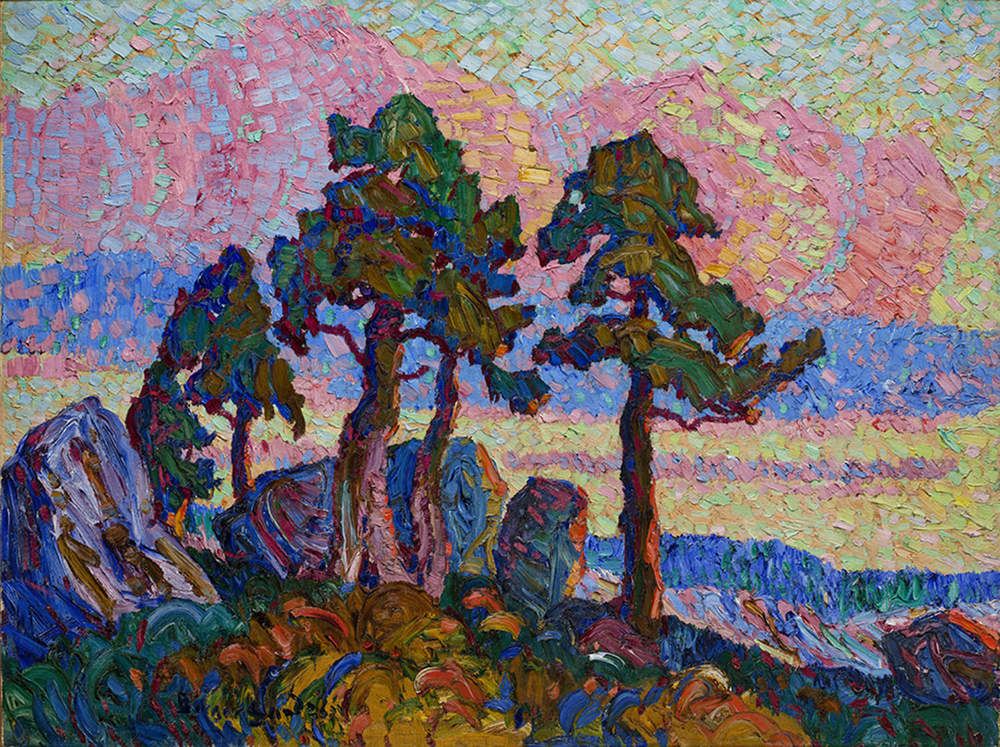
|
Birger Sandzén: Van Gogh of the WestThursday, July 16, 2020Swedish-born painter Birger Sandzen has become widely known for his for his oil paintings, which continue to rise in value as an increasing number of collectors and museums scramble to purchase one of the 2,600 oil paintings he created in his lifetime. Popularly known as the “Van Gogh of the West,” Sandzen paints the red rock cliffs and western landscapes of the United States with the curving brush strokes, thickly applied paint, and impassioned color that one usually associates with a Van Gogh painting. Read More → |

|
|
Birger Sandzén: Van Gogh of the West Thursday, July 16, 2020 Swedish-born painter Birger Sandzen has become widely known for his for his oil paintings, which continue to rise in value as an increasing number of collectors and museums scramble to purchase one of the 2,600 oil paintings he created in his lifetime. Popularly known as the “Van Gogh of the West,” Sandzen paints the red rock cliffs and western landscapes of the United States with the curving brush strokes, thickly applied paint, and impassioned color that one usually associates with a Van Gogh painting. Read More → |
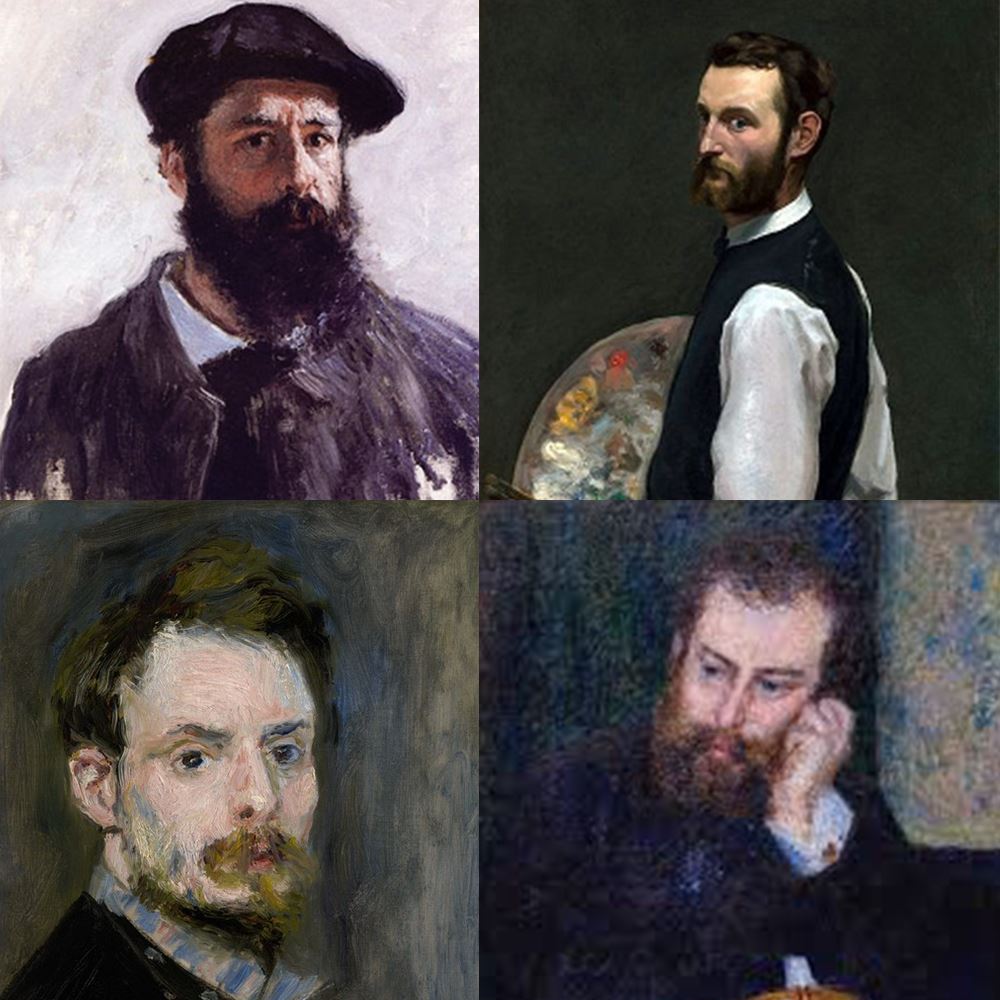
|
Four Friends: The Foundation of ImpressionismThursday, July 16, 2020In 1862, four young men came together in Paris to study painting. They were Claude Monet, Pierre Renoir, Alfred Sisley, and Frederic Bazille. In the course of their studies, they brought into being a completely new style of art called Impressionism. Their teacher was Charles Gleyre, who had taken on the school of Paul Delaroche, and was himself a working artist. Although he himself never achieved the fame of some of his students, he was an excellent teacher. He taught them to paint “en plein air” (painting outdoors) in Paris and surrounding areas. Read More → |

|
|
Four Friends: The Foundation of Impressionism Thursday, July 16, 2020 In 1862, four young men came together in Paris to study painting. They were Claude Monet, Pierre Renoir, Alfred Sisley, and Frederic Bazille. In the course of their studies, they brought into being a completely new style of art called Impressionism. Their teacher was Charles Gleyre, who had taken on the school of Paul Delaroche, and was himself a working artist. Although he himself never achieved the fame of some of his students, he was an excellent teacher. He taught them to paint “en plein air” (painting outdoors) in Paris and surrounding areas. Read More → |
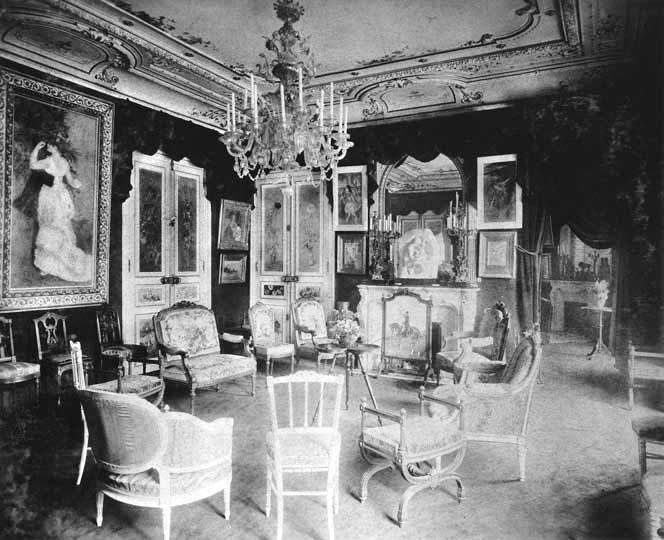
|
Paul Durand-Ruel, the Godfather of ImpressionismTuesday, April 21, 2020Today, Impressionism is arguably the most well-loved and well-known art in the world. A little less known is the fact that Impressionism almost never came to be. The masters of the Impressionism era, who are so modernly cherished, might have been unknown to this day without the labors of one man: an art dealer by the name of Paul Durand-Ruel. Read More → |

|
|
Paul Durand-Ruel, the Godfather of Impressionism Tuesday, April 21, 2020 Today, Impressionism is arguably the most well-loved and well-known art in the world. A little less known is the fact that Impressionism almost never came to be. The masters of the Impressionism era, who are so modernly cherished, might have been unknown to this day without the labors of one man: an art dealer by the name of Paul Durand-Ruel. Read More → |
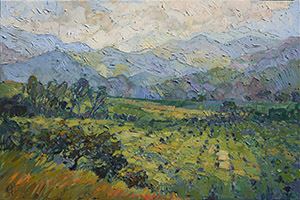
|
Impressionism Series Part Three: Impressionism Around the WorldA series on the development of ImpressionismSaturday, April 8, 2017While artists flocked to France to learn or develop the latest Post-Impressionist style, the love for pure Impressionism never died. In fact, Impressionism spread around the world, heralding the beginning of modern art. Read More → |

|
|
Impressionism Series Part Three: Impressionism Around the World A series on the development of Impressionism Saturday, April 8, 2017 While artists flocked to France to learn or develop the latest Post-Impressionist style, the love for pure Impressionism never died. In fact, Impressionism spread around the world, heralding the beginning of modern art. Read More → |
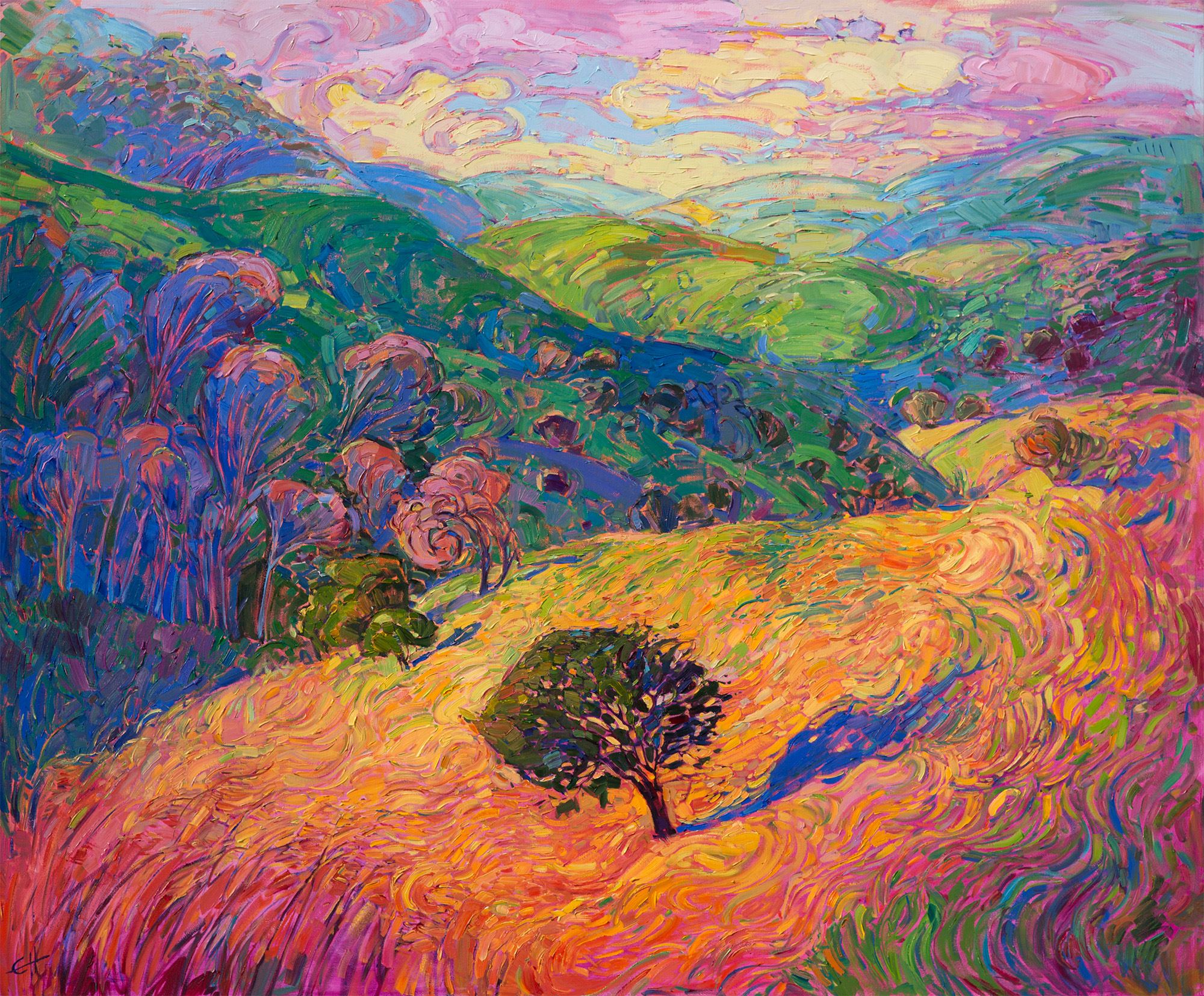
|
Impressionism Series Part Two: The Birth of Modern ArtA series on the development of ImpressionismSunday, March 12, 2017Impressionism is often characterized by its study of light and the vibrant colors used to convey an impression of a scene. The brushwork commonly employed in Impressionist works is loose and layered, with the paint mixing on the canvas rather than being premixed, painted on and then blended. Read More → |

|
|
Impressionism Series Part Two: The Birth of Modern Art A series on the development of Impressionism Sunday, March 12, 2017 Impressionism is often characterized by its study of light and the vibrant colors used to convey an impression of a scene. The brushwork commonly employed in Impressionist works is loose and layered, with the paint mixing on the canvas rather than being premixed, painted on and then blended. Read More → |
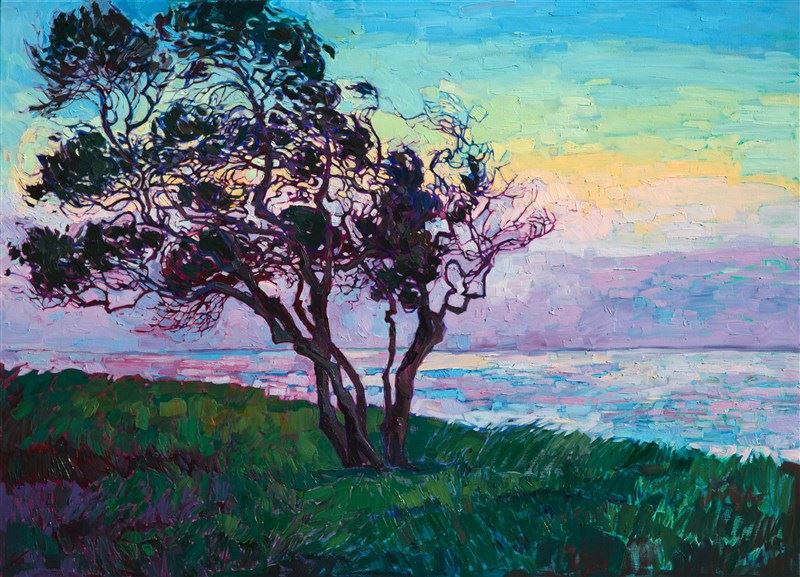
|
Impressionism Series Part One: Capturing Light with PaintA series on the development of ImpressionismFriday, March 3, 2017The artistic movement Impressionism is often credited with moving painting techniques away from the overtly realistic to a modern approach. An impressionist painting is apparent to the eye in several ways, including one of the most important studies: that of how light and shadow affect color in the world around us. Read More → |

|
|
Impressionism Series Part One: Capturing Light with Paint A series on the development of Impressionism Friday, March 3, 2017 The artistic movement Impressionism is often credited with moving painting techniques away from the overtly realistic to a modern approach. An impressionist painting is apparent to the eye in several ways, including one of the most important studies: that of how light and shadow affect color in the world around us. Read More → |
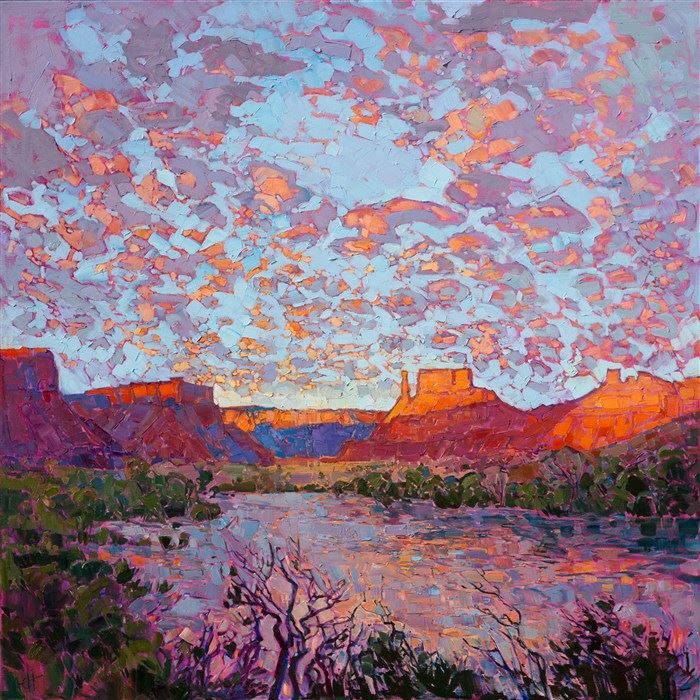
|
Birger Sandzen: The Inspiration of ImpressionismFrom Impressionism to Open ImpressionismWednesday, September 14, 2016Birger Sandzen was a landscape painter born in 1871, while Erin Hanson is a contemporary impressionist. However, there are strong similarities in their styles. You can see that Hanson draws the same inspiration from nature as Sandzen did. Read More → |

|
|
Birger Sandzen: The Inspiration of Impressionism From Impressionism to Open Impressionism Wednesday, September 14, 2016 Birger Sandzen was a landscape painter born in 1871, while Erin Hanson is a contemporary impressionist. However, there are strong similarities in their styles. You can see that Hanson draws the same inspiration from nature as Sandzen did. Read More → |
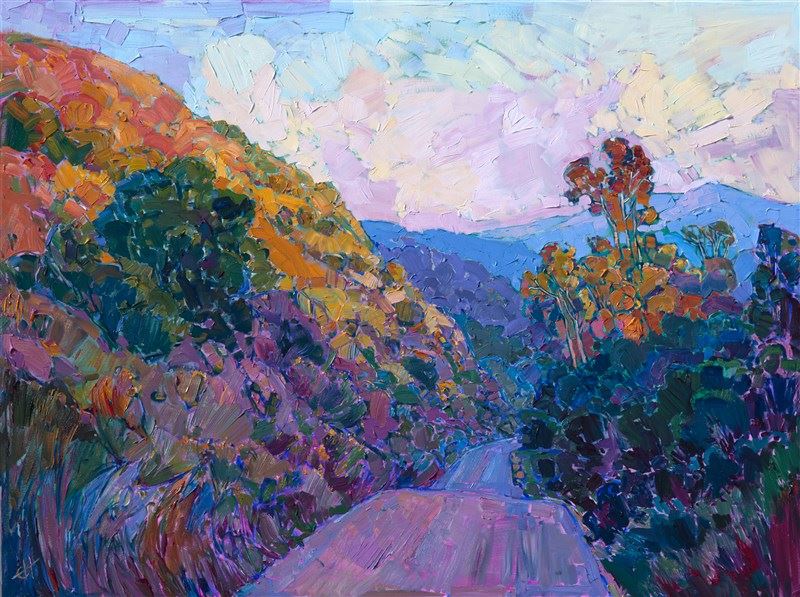
|
A Look at California ImpressionismThe Rebirth of the California Impressionism MovementTuesday, May 24, 2016While the heyday of California impressionism was between 1910 and the 1930’s, its techniques and celebration of color are employed today by painters like Erin Hanson. Modern day California impressionism harkens back to the early 1900’s by playing with the intense light of the Golden State and rejoicing in the use of color. Read More → |

|
|
A Look at California Impressionism The Rebirth of the California Impressionism Movement Tuesday, May 24, 2016 While the heyday of California impressionism was between 1910 and the 1930’s, its techniques and celebration of color are employed today by painters like Erin Hanson. Modern day California impressionism harkens back to the early 1900’s by playing with the intense light of the Golden State and rejoicing in the use of color. Read More → |
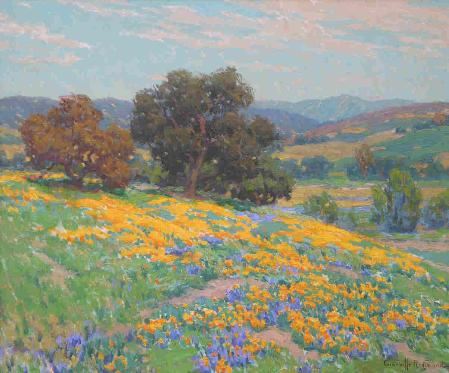
|
Granville Redmond: A Study of Light and ColorThe Profile of a California Landscape PainterMonday, April 11, 2016Granville Redmond was a turn-of-the-century painter who specialized in Californian landscapes. In doing so, he captured the intense colors and textures found all around this state, while celebrating the differences light can bring to a palette. Read More → |

|
|
Granville Redmond: A Study of Light and Color The Profile of a California Landscape Painter Monday, April 11, 2016 Granville Redmond was a turn-of-the-century painter who specialized in Californian landscapes. In doing so, he captured the intense colors and textures found all around this state, while celebrating the differences light can bring to a palette. Read More → |
 600px.jpg )
|
American Impressionism Series: William WendtAn American Original Impressionist, by Way of GermanyMonday, March 28, 2016William Wendt, the original American impressionist, compared with contemporary open-impressionist Erin Hanson. Wendt's passion for California's landscapes is matched by few painter's today. Read More → |
 600px.jpg )
|
|
American Impressionism Series: William Wendt An American Original Impressionist, by Way of Germany Monday, March 28, 2016 William Wendt, the original American impressionist, compared with contemporary open-impressionist Erin Hanson. Wendt's passion for California's landscapes is matched by few painter's today. Read More → |
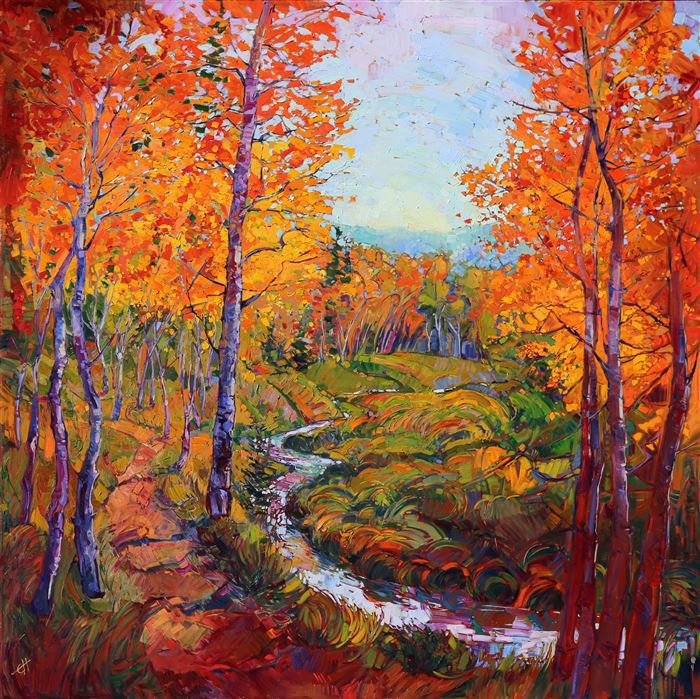
|
Group of Seven Influencing Contemporary Landscape ImpressionismWhat Would the Group of Seven Have Painted if They Visited California?Wednesday, March 23, 2016Erin Hanson’s art has been compared favorably with art created by the Group of Seven and their associates. We can see their influence in her work by comparing many of her paintings with works by Tom Thomson, Lawren Harris, A.Y. Jackson, Franklin Carmichael and others. When looking at these classic Group of Seven works, we can see a certain vibrancy and love of color now mirrored in modern impressionistic works by Erin Hanson. Read More → |

|
|
Group of Seven Influencing Contemporary Landscape Impressionism What Would the Group of Seven Have Painted if They Visited California? Wednesday, March 23, 2016 Erin Hanson’s art has been compared favorably with art created by the Group of Seven and their associates. We can see their influence in her work by comparing many of her paintings with works by Tom Thomson, Lawren Harris, A.Y. Jackson, Franklin Carmichael and others. When looking at these classic Group of Seven works, we can see a certain vibrancy and love of color now mirrored in modern impressionistic works by Erin Hanson. Read More → |
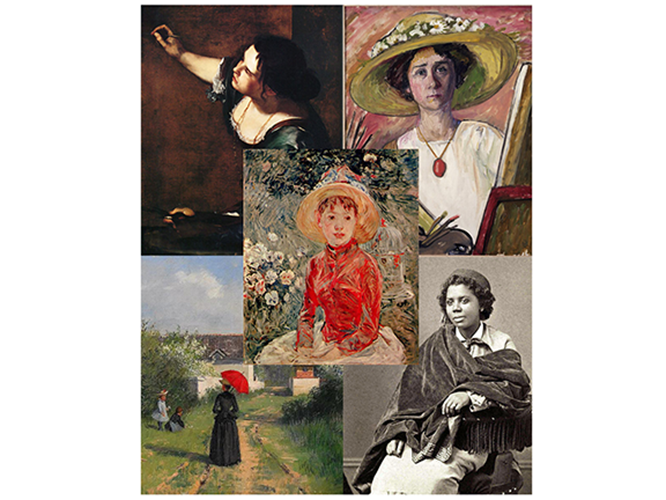
|
Can You Name Five Women Artists?For Women's History Month, Museums Nationwide Join Forces to Honor Women Artists Past & PresentMonday, March 14, 2016In Honor of Women's History Month, #5WomenThroughHistory: A Study of Some of the Most Influential Artists in History, Who Also Happen to be Women. Read More → |

|
|
Can You Name Five Women Artists? For Women's History Month, Museums Nationwide Join Forces to Honor Women Artists Past & Present Monday, March 14, 2016 In Honor of Women's History Month, #5WomenThroughHistory: A Study of Some of the Most Influential Artists in History, Who Also Happen to be Women. Read More → |
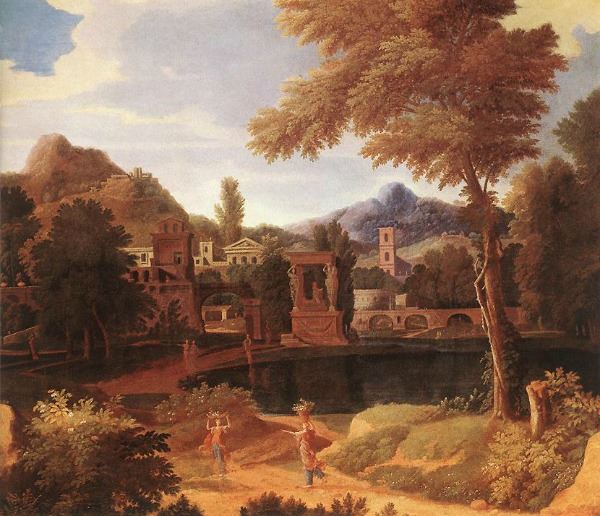
|
American Impressionism Series: Jean-Francois MilletThe Beginnings of ImpressionsmThursday, November 12, 2015While many people are familiar with Impressionism, there is a particular figure from the mid-19th century who influenced French painting towards landscapes, and eventually Impressionism: Jean-Francois Millet (1814 - 1875). Read More → |

|
|
American Impressionism Series: Jean-Francois Millet The Beginnings of Impressionsm Thursday, November 12, 2015 While many people are familiar with Impressionism, there is a particular figure from the mid-19th century who influenced French painting towards landscapes, and eventually Impressionism: Jean-Francois Millet (1814 - 1875). Read More → |